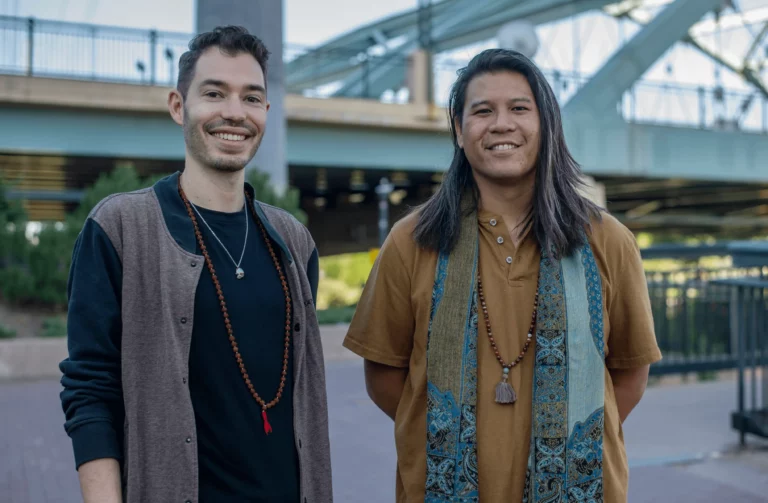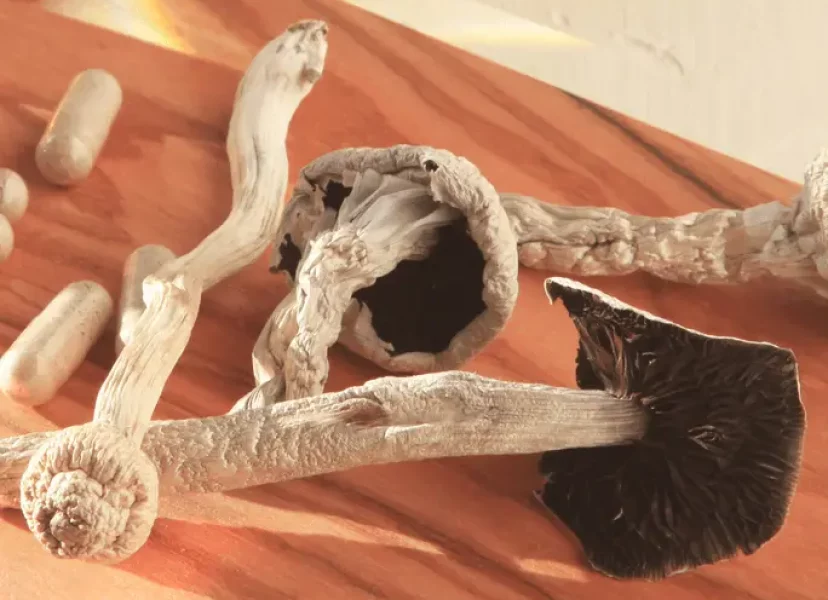The DSM-V describes a handful of different anxiety disorders that all begin with “marked fear or anxiety”. These feelings can be related to a certain type of event (separation anxiety), unexpected and seemingly random (panic disorder), or can be excessive and uncontrollable (generalized anxiety disorder).
Emotional disturbances such as worry and distress are often accompanied by physical discomfort such as chest pain, a pounding heart and difficulty breathing. Your mind should be a playground, not a prison, but sometimes we can find ourselves trapped by our own thoughts. In 1964, Karl Rickels described anxiety as:
“The subjective feeling of heightened tension and diffused uneasiness, the conscious and reportable experience of intense dread and foreboding, conceptualized as internally derived and unrelated to external threat.
It is not merely fear because it lacks a specific object. It is a painful dread of situations, which symbolize unconscious conflicts and impulses. Anxiety can be partly bound by such mechanisms as phobias, obsessions and compulsions or it can be diverted into the soma, leading to somatization.”
The type of anxiety one may suffer from isn’t necessarily important. What is important is the fact that serotonergic drugs like psychedelic mushrooms and LSD have the ability to rewire the brain and they’ve already been proven to help treat anxiety.
You might think that rewiring your brain will change your thinking patterns, but it may be the reverse. That’s right, changing your thinking can change how your physical brain behaves. But we’ll come back to that a little later. How can psychedelics help treat anxiety? Let’s get right into it.
Anxiety & Social Conditioning
As we grow up, our brain settles into certain “cliques” of neuron communication based on how we interact with our environment. Eventually, as our personalities and identities become solidified, our behaviors and thoughts become more rigid.
This is one of the reasons why if you know someone well enough, you can begin to infer how they will react to certain stimuli. Rigid brain communication is an evolutionary tool that helps us thrive in our surroundings. It helps us identify patterns in otherwise unpredictable environments.
This evolutionary tool is not perfect though. Because the brain is a pattern machine, it reinforces maladaptive conditioned responses. We grow up subconsciously mirroring the unhealthy coping methods of our caretakers.
For example, attachment between mother and child is an innate evolutionary drive that promotes the child’s chances of survival. How attached a child is to their mother affects their security-seeking behavior. John Bowbly introduced the importance of attachment through, describing it as “lasting psychological connectedness between human beings” (Bowlby, 1952).
Mary Ainsworth picked up where he left off and conducted an experiment famously referred to as the Strange Situation Procedure, where she discovered three patterns of behavior related to attachment. Their manifestation depends on how needs are met during childhood.
If an attachment figure (like a mother) is present, responsive and helpful, then a baby will feel secure in their presence. If a cardinal attachment is not made, then a baby will struggle to feel secure, and will seek security in strangers, or not seek security at all and avoid affectionate contact.
Maternal anxious self-talk is significantly associated with anxious self talk in children (Wei et al., 2014). This means that our behaviors are molded by our environments and caretakers, regardless of their moral correctness or emotional productivity.
We can’t control the environment we grow up in, however we are discovering that in adult life, we can unlearn these maladaptive behaviors. Our brain can be divided into “functional networks” which are areas of the brain that communicate with each other. Each network causes certain cognitive phenomenons to occur.
Abnormal behavior of these functional networks are correlated with different mental disorders. For example, increased functioning of the cingulo-opercular and ventral attention networks in combination with decreased functioning of the fronto-parietal and default mode networks, are believed to be neural correlates of anxiety.
Brain pathways get stronger every time they are used, so the longer we behave in the same way, the more difficult it can be to use a different pathway (behave in a different way).
Normally, our brain collects sensory information from our physical environment using specific, rigid functional networks. However, serotonergic drugs cause a temporary disruption of these conditioned neural pathways, allowing us to perceive and analyze with intensified neural connectivity.
As we previously mentioned, our brain’s behavior is directly related to the choices we make. If our brain experiences unusual connectivity after ingestion of a psychedelic compound, it’s safe to assume we’d have some pretty unique thoughts.
In a psychedelic experience, these thoughts manifest as insights, or “aha” moments. Our typical anxious behaviors are put on pause as the brain’s Default Mode Network ceases to replicate the synaptic patterns associated with our usual feelings of anxiety.
Using Psychedelic-Induced Anxiety to Your Advantage
Picture this. You’ve set your intentions, you’re in a comfortable environment, and your sitter is accompanying you after you’ve ingested a dose of magic mushrooms. You’re listening to instrumental music as you wait for the effects to kick in.
You realize this is the moment you’ve been waiting for, and suddenly, your anxiety begins bubbling up to your throat and you are scared of what’s to come. This pre-trip anxiety is a common phenomenon as journeyers wait for psychedelic medicine to take effect. 2014 research conducted by A. W. Brooks may offer a helpful way to soothe this pre-trip anxiety.
Brooks investigated studies that involve public speaking, math performance and karaoke singing. They found that individuals who reappraise their anxious arousal as excitement performed better compared to those who tried to calm down.
By using simple methods such as self-talk, saying phrases out loud like “I am excited”, they were able to harness their nervous energy and turn it into a positive mindset that improved their performance.
This strengthens the argument that Hatzigeorgiadis et al., put forth in a 2009 study. They found that motivational self-talk has a positive effect on anxiety, further proving that our thinking can affect our physiological responses.
Self-talk isn’t just useful for the pre-trip jitters. It can be an incredible tool to carry by your side as you approach the peak of your trip. You have probably learned coping mechanisms in the past but have found it hard to implement them in your everyday life, and that’s common too. Our survey respondent’s trip summary offers a great example:
“I had combined a low dose of LSD with a dose of cannabis (at a time of low tolerance). I was over-confident because I had made much progress in healing from trauma, and I thought I could handle it, but my mind began ratcheting up all sorts of negative thought loops about all areas of my life.
A cascade of obsessive paranoid thoughts and emotional pain was welling up in the body. I began to perform a pranayama (yogic breathing) where I briefly hyperventilate (similar to Wim Hof) and then let the final exhalation linger at the bottom for a long time — along with bringing awareness to the places of pain in my body.
After doing this — on autopilot — several rounds, all that energy powering my emotional meltdown had been converted to bliss energy — no other way to describe it. A sense of joy and openness. Beautiful trip from there on out.” -Anonymous Respondent
By implementing these coping mechanisms during your trip, they are more likely to follow you into your everyday life. Again, this happens because psychedelics promote enhanced neuroplasticity. The associations you make while on psychedelics are more prone to synaptic reinforcement.
Pascual-Leone et al. conducted two 1995 experiments using TMS (transcranial magnetic stimulation) to examine changes in the cortical motor areas involved in acquiring new fine motor skills. In this case, piano exercises were used.
They compared brain images of subjects who physically practiced a 5-finger piano exercise with those who mentally practiced the same exercise. Mental practice included visualizing the piano in front of them and keeping their fingers still while imagining moving them through the 5-finger exercise.
They found that mental practice was sufficient enough to change the neural circuits involved in acquiring new motor skills. In a 2021 study led by Ling-Xiao Shao et al., they found that a single dose of psilocybin sustainably increases the number and size of neuronal connections by 10%.
Thus, if mental practice of anxiety coping mechanisms can help us reduce our physiological response to anxiety, then imagine the neural associations that could form while practicing these coping mechanisms while on psychedelics.
Psychedelics on The Anxious Brain
How psychedelics work in the brain have inspired phenomenal 21st century scientific explorations. Serotonergic psychedelics are named after the neurotransmitter they stimulate.
They flood our brain and bind to the serotonin receptors that produce feelings of satisfaction and ease. After a high dose of psilocybin, resting-state functional connections increase across the brain and trait anxiety decreases for at least 1 month post-psychedelic experience (Barrett et al., 2020).
A key biomarker of anxiety is increased activity in the default mode network (DMN). A 2015 study by Palhano-Fontes et al., recruited 10 participants to study the effect of ayahuasca, a hallucinogenic drug that contains 5-HT2A (serotonin) receptor agonists, on DMN connectivity.
Using fMRI protocols, the study found that the DMN experienced a significant decrease in activity after ayahuasca intake. This same decrease in DMN activity was observed in a 2013 study conducted by Muthukumaraswamy et al.
Using magnetoencephalography, researchers monitored the brain electrical activity of healthy participants who were dosed with an intravenous infusion of psilocybin. The study’s primary finding was a significant decrease in oscillatory power within the DMN, indicating reduced activity in that brain region.
A 2018 study by Felix Muller and colleagues used LSD to study changes in the DMN, 20 healthy participants were recruited. The study found that acute administration of LSD (100 μg) significantly (p < 0.005) reduced visual, sensorimotor, and auditory network connectivity within the default mode network.
As a result of DMN reduction, these studies indicate an effective reduction in ruminating thoughts, a major trait of anxiety disorders. In a 2018 study conducted by Preller and colleagues, researchers recruited 24 healthy participants to study brain connectivity changes in LSD-induced states.
Findings indicated that LSD induces hyper-connectivity in the occipital cortex, superior temporal gyrus, postcentral gyrus, medial and lateral prefrontal cortex, the cingulum, insula, cingulum, and the temporoparietal junction.
Increases in connectivity were also noted in the anterior and posterior cingulate cortex, the thalamus, amygdala, and the basal ganglia. These findings are crucial when compared to the brain regions that experience disconnectivity as a function of anxiety.
A 2015 study led by Liu and colleagues show us how people with anxiety experience disruption of functional connectivity in several brain regions. This includes the amygdala, prefrontal cortex, anterior insula, and the anterior cingulate cortex.
These are all brain regions that experience hyperconnectivity from psychedelics. Thus, these findings suggest that psychedelics can help reduce anxiety by increasing functional connectivity in the brain regions that are affected as a function of anxiety.
If you choose to confront your anxiety during your trip, or it decides to confront you, it might feel like you’re face to face with the beginning of an ever-feared “bad trip”, but if you’ve prepared appropriately, then you know that surrender is the best way to neurologically condition sustainable anxiety-coping strategies.
An Anecdotal Report on Psychedelics For Anxiety
We’ve asked Psychedelic Passage survey respondents to share how psychedelics have helped treat their anxiety. The story of one journeyer struck our attention. They’d suffered from severe panic disorder with social anxiety and depression.
Their general anxiety grew worse and gave way to panic attacks that caused vomiting. Cannabis and SSRIs failed to mask the problem without unwanted side effects, so they turned to psychedelics to face their anxiety head on.
“I have more tools to approach my anxiety now, but I knew a lot of these tools before I tried psychedelics too. I spent a lot of time listening to podcasts on the science of anxiety, reading CBT workbooks and trying to journal.
I tried to meditate and distance myself from my thoughts. I went to therapy and my amazing therapist helped me discover I had social anxiety in particular.
I knew how to observe an anxious thought or worry, but it was very hard for me to change my spiraling thoughts when my stomach was incredibly queasy and my palms were sweaty and my heart was racing.
Medication helped with my anxiety, but after Lexapro took away my anxiety I had no motivation and sunk into a deep depression. I was tired and fatigued all the time from the Lexapro, so I asked to add Wellbutrin after doing a lot of research.
But after just a couple days of Wellbutrin, my room was clean, I was singing in the car and wanting to talk to people instead of hole up in my room. However it made me jumpy and shaky, and blurred my vision, and I was also very impulsive on it…”
After they had weaned off of their SSRIs, they started to use psilocybin mushrooms and LSD to intentionally confront their anxiety.
“…I was mostly macrodosing. I used anywhere from 1.5 grams to a huge dose of 6 grams of dried mushrooms. But it was honestly my first LSD experience that had the most impact on my anxiety and confidence. I took 100ug of 1pLSD.
I had a moment where I looked around my room and I saw this brilliant person, someone who knew the name of every 30 plants in my room and how to care for them. I saw an artist, I saw someone who treasured human connection.
I saw someone who continued to try even when things got hard, who always tried to see the positive even when my brain and body were betraying me.
I changed the course of my trip by ceasing to fight it. I accept that I am anxious. And that I am not experiencing what I want to be right now, acknowledge the thoughts and address them instead of trying to fight or suppress it. It’s like turning on a light in a dark room…”
A journal entry from one of their earlier mushroom experiences included a “Things I Love” list, with things they loved about themselves:
“1. Such a kind person, even when no one is watching.
2. Big heart, love to sacrifice comfort for others.
3. Creative. So artistic.” -Anonymous Respondent
In Conclusion
It isn’t all about implementing coping mechanisms or purposefully changing your thoughts. It is equally important to be able to relinquish control and allow psychedelics to teach us what they have to offer.
Psychedelics promote positive changes in empathy, social connectedness, and overall happiness, especially noticeable during the afterglow period, that can carry us through difficult times. Ridding ourselves of anxiety is about self-actualizing, realizing our true potential.
Whether you’re using a trip to confront your anxiety or to improve your quality of life, working in tandem with a psychedelic facilitator can ensure you get the most out of your experience.
If you are interested in a transformational psychedelic experience, we empower you to book a consultation with us. If you wish to learn more about psychedelic therapy, you can always check out our resources page for more informative articles like this one.



